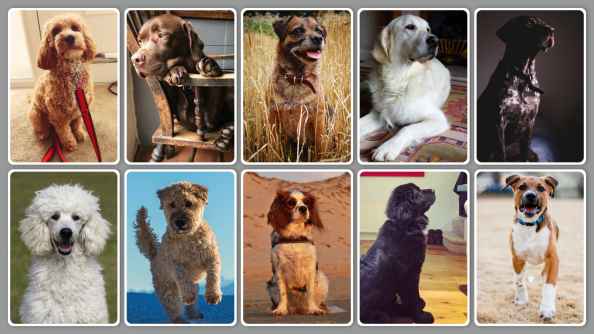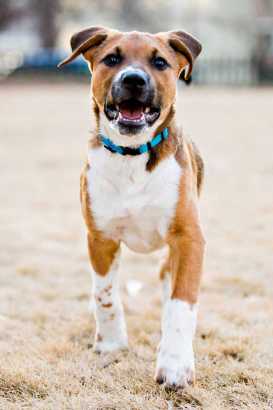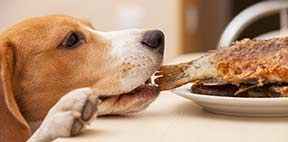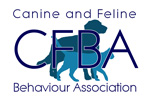The 10 Best Dog Breeds for Families and Children.

Anyone who owns a dog will know that they are more than pets; they’re family. However, it is important to choose the right dog for you (perhaps you're choosing a puppy?) to ensure a happy and harmonious home for many years to come.
Ideally, you need to think about three key factors to help you choose the right dog for you.
These include:
Temperament - For example, you may want to choose a breed that is known for being very calm so it can cope with the boisterous behaviour that young children can bring. Or, you may want a more athletic dog that can keep the family entertained outdoors!
Size - Make sure you chose a dog that is the right size for you. If you live in a small house and have a small car make sure you don’t get a Newfoundland!
Energy - Be realistic as to how much exercise you can provide your dog. Dogs who are under-exercised can often develop behavioural problems down the line due to pent up energy and frustration.
Having a dog can be an excellent companion for your children, it can encourage them to get outside and exercise, and dogs can teach children a lot about responsibility, kindness and care for another.
Whilst this article focuses on the various breeds you might like to consider, you must do your research on how to go about making such a purchase, choosing from a litter and avoiding some of the common pitfalls when choosing a dog. A quick search online will bring a wealth of information on how to go about this so that you avoid unscrupulous breeders that will take advantage of you, such as selling you a dog that isn’t the breed or age they say it is, or happily try to foist littermates upon you so that they ‘keep each other company’.
I have purposefully not included any of the brachycephalic breeds (flat-faced pugs, bulldogs etc.) due to the ongoing health concerns that are shared across the veterinary and behaviour world. Please understand that I adore these dogs and have nothing against them, but I do not wish to perpetuate the trend of poor breeding standards that we’re seeing at present.
I have also avoided ranking the breeds from 1-10, as your choice will vary on your specific needs once you have done your own research. I asked out on the my Facebook page for input from over 8,00 people and there was an overwhelming response that inevitably suggested the breeds that were currently owned, but equally some sensible points were made on some of the breeds to avoid and this has all been taken into account. So, the list is not final, it is somewhat subjective and most of all, it is my list that has been filtered through thousands of consultations over the years. You’re welcome to comment at the foot of this article.
Below I have chosen what I believe to be the top 10 breeds of dog that could fit in perfectly within a family environment. Please note, that all of these breeds require time and training, along with balanced and consistent rules in the home.
- Cockapoo
- Labrador
- Border Terrier
- Golden Retriever
- German Short Haired Pointer
- Poodle
- Soft Coated Wheaten Terrier
- Cavalier King Charles Spaniel
- Newfoundland
- Rescue Dogs
Cockapoo
Cockapoos are a small breed but have a big personality. They are a combination of a Cocker Spaniel and a Poodle which dates back to the 1950s in America. The breed has the benefit of a low to non-shedding coat inherited from the Poodle, and the affectionate and trainable nature of the Cocker Spaniel.
They are extremely affectionate, intelligent (sometimes too clever for their own good), and are well known for being excellent around children.
Despite being small dogs, Cockapoos require a good amount of exercise as they are very agile. This can be great for families who may want to train their dog in agility or flyball for example. Cockapoos also need to be professionally groomed several times a year which can be high maintenance if you have a busy household.
I personally love Cockapoos. It is a breed that has seen a huge increase in popularity in recent years along with numerous other poodle type mixes. Due to the popularity and resultant demand, breeding has been increased and as a result the standards of health and behaviour can drop in some cases. Do your research on any litter and breeder.
I think they’re a joy to be around and have a very sweet nature and I wouldn’t hesitate to recommend a Cockapoo to an energetic household with children of all ages.
Labrador
Labradors are probably one of the most popular family breeds in the UK- and rightly so! They are gentle, eager to please and intelligent. They are extremely adaptable, from working as gundogs, guide dogs, or search and rescue dogs along with many other things. The breed first came into the UK in the 1800’s introduced by royalty.
They are a sizeable dog that requires at least an hour or two of exercise a day and quite a lot of feeding! However, they are generally low maintenance and easy to care for. I have found that the black Labrador is a good choice, especially the stockier show types, the yellow or reds can be very active and are often well suited to a working role in the field and finally the chocolates can be high energy and more 'zingy'. As you can tell, this is not a scientific verdict; just my experiences with them.
They are often very food driven and willing to please and therefore quite easy to train. Labradors are great around children as they tend to be loyal and trustworthy, so as long as they’re socialised well as puppies they can get on with people of all ages as well as other animals.
In the past, my family and I have considered getting a Labrador. I think they’re attractive, biddable and loyal dogs who have a rightful place in many family homes.
Border Terrier
Many of you will know that I have a Border Terrier myself- so I can happily speak highly of the breed with nearly 15 years experience in our home, plus my dad kept a couple in years gone by. Pip has been my family dog for the last 13 years and has been nothing but excellent around my daughter, cats, people and other dogs.
Border Terriers became popular in the 19th Century having been used for driving out prey on hunts. They are renowned for their cheeky, affectionate and independent natures, and as long as they are well introduced, Border Terriers can be the perfect child’s sidekick.
Border Terriers have a lot of stamina, therefore they need plenty of exercise despite their size. We used to take our Border Terrier to agility classes which she loved as it provided the mental and physical stimulation she required as a young dog. They also have a high prey drive, so it is extremely important to train them well within the recall to ensure your dog focuses its attention on you at all times.
Our Pip is now 13 and loves nothing more than morning cuddles on the sofa and walks out in the woods with her family. She is and has been a pleasure to own over the past years and with the right discipline and training, a Border Terrier could make an active family a perfect little companion.
Golden Retriever
I think many people can agree that Golden Retrievers are lovely looking dogs and have the personality to match. They are extremely trustworthy, eager to please and sociable. They were first discovered in the UK when Lord Tweedmouth saw them performing in a Russian Circus and liked the look of them so much that he decided to buy them and take them home.
Due to the Golden Retriever’s nature, they have become one of the most popular choices for family dogs. They are easy to train, confident and playful making them a good breed for first-time owners. They are extremely tolerant around children and very rarely show aggressive behaviour. Although it is important to say that all interaction between dogs and children should be supervised.
It is to be noted that Golden Retriever’s coats do shed a lot and require regular grooming which can be a problem for those of us who like fur-free homes. Golden Retrievers are active and lively so they need at least one to two hours of exercise a day. They also love water and retrieving, so games such as retrieving dummies out of a river would provide your dog the perfect physical and mental stimulation it needs.
I am extremely fond of Golden Retrievers and admire their gentle nature. I would love to have one if they didn’t shed so much!
German Shorthaired Pointer
The German Shorthaired Pointer (GSP) is a handsome, well balanced, and noble dog who have earned themselves a reputation for being good family dogs. They were known for being extremely good hunting dogs, and therefore is good for families who lead active, outdoor lives.
Their kind, gentle temperament makes them very good around children. However, they can sometimes be boisterous, so they may be better suited to older children who understand how to behave around dogs slightly better.
German Shorthaired Pointers require minimal grooming which is advantageous, but they do need a lot of exercise. Families who enjoy running, or mountain biking etc. could easily integrate a German Shorthaired Pointer into their hobbies as they have the energy and enthusiasm to happily run alongside you.
I find German Shorthaired Pointers a really interesting choice as they are great dogs to train in so many different areas such as gun-dog training or agility to name a few. I think they’re exceptionally handsome dogs that have so much to give for the right family. There are other breeds in the Hunt Point Retrieve (HPR) category that are well worth considering, such as the Hungarian Vizsla (smooth and Wires) the German Wirehaired Pointer and the Weimaraner. I've owned two Wirehaired Vizslas and both have been a joy.
Poodle
Despite the Poodle’s somewhat pampered reputation, they are a proper breed that was bred to do proper jobs. They were originally a water retriever who fetched waterfowl for hunters. Their somewhat elaborate coat styling was done so that the dogs could stay warm in areas and avoid debris snagging the coat in other areas.
There are three sizes of poodle: the Toy, the Miniature and the Standard. This is great for families as you can decide which size suits you and your family best. If you want a big dog to keep up with your active lifestyle you could choose the Standard, or if you wanted a smaller, lower maintenance lap dog, you could choose the Toy poodle.
All three sizes are extremely intelligent, loving and often have an “air of distinction” about them. Poodle’s willingness to be trained and strong back legs can provide children with a great companion to teach tricks to or take to agility classes- giving them some responsibility which is so beneficial for a child’s upbringing.
Poodles are a good choice for people with allergies as they are generally non-shedding, however, they do need regular grooming at professional groomers to maintain the coat’s condition.
I have always been fond of the Poodle and have often ‘toyed’ with the idea of getting one. I love their looks and the personality is enough to make you smitten. Trained correctly, Poodles can make fantastic family dogs.
Soft Coated Wheaten Terrier
Perhaps not an obvious choice to some, but the Soft Coated Wheaten Terrier originates from Ireland where they hunted vermin and guarded farms. They had to endure lots of harsh weather, making them the hardy and robust terrier we have today. They are happy and loving dogs who thrive being around people making them a fantastic family dog. They are often said to remain puppy like and love to be entertained and entertain.
They are intelligent and willing to please and therefore make it easy to train. However, they can be stubborn at times like many terriers, so you must train and socialise them well to maintain a nice natured dog. Soft Coated Wheaten Terriers adore children and love playing with children for hours.
It’s worth mentioning that Soft Coated Wheaten Terriers are non-shedding which can be an attractive feature, however, their coats do still need a lot of maintenance which may be a drawback. Soft Coated Wheaten Terriers need about an hour a day of exercise, so not too demanding, but enough to keep a mischievous mind from wandering.
We have previously considered owning this breed, but actually fell into the ownership of two Wire Haired Vizslas in the last 20 years, and one can only own so many dogs at a time. I think that if you like the description of this intelligent and active breed, then it would deserve a place on your shortlist.
Cavalier King Charles Spaniel
Cavalier King Charles Spaniels were awarded their royal title when it became known that the King during the Stuarts adored them and wouldn’t be seen without them. So if they’re fit for royalty, they’ll certainly be fit for everyone else.
Cavalier King Charles Spaniels are very sweet natured dogs who adapt well to anyone’s lifestyle without a fuss. They are amenable dogs who take well to obedience training which could be fun for older children who may want to take the reins in the dog’s training. Cavalier King Charles Spaniels are described as being “ultra good” with children as they are so gentle and tolerant.
Regular grooming is needed to keep the coat in good condition and they do shed lightly, but nothing of great concern. These little dogs don’t need a huge amount of exercise, but it is recommended you give them around an hour a day as they would happily curl up on the sofa all day and are at risk to put on weight.
Since I was a child I have always loved Cavalier King Charles Spaniels. I think they’re sweet, gentle natured and very smart little dogs. They’re a perfect breed for a family with young children who want to enjoy a dog for the invaluable companionship they can offer.
Newfoundland
To me, these dogs are the epitome of a gentle giant and a clear nod to the ‘extra large’ dog. There’s no denying that Newfoundlands are extremely big and take a lot of feeding. However, they are so kind and docile with an utmost willingness to please. It is said that Newfoundlands have a “real affinity” with children and love to interact with them.
They have extraordinary webbed feet and thick coats making them excellent swimmers and love walks with their owners. Due to their size, these dogs can be very expensive to feed and their thick coat can often make Newfoundlands very hot. Their life expectancy is also quite short at around 8-10 years.
It goes without saying that taking on a Newfoundland could be challenging due to the sheer size of them. Having said that, they are one of the most gentle and loving breeds I have come across who are generally excellent around children. If you have the space, time and money, I think Newfoundlands could be a breed to consider.
Rescue Dogs
Whilst there’s no denying that buying a purebred puppy at 8 weeks old from a certified breeder often provides you and the puppy the best chance of getting along, there is a lot be said about considering rescuing a dog of any breed mixture too! According to the Dogs Trust, there are more than 110,000 abandoned or stray dogs at any one time in the UK, with 21 dogs a day being put to sleep by local authorities. Alarming statistics for a nation of dog lovers.
Often dogs in rescue centres are completely blameless and may find themselves at a rescue centre due to an owner passing away, a divorce or moving house for example. By rescuing a dog you can be that second chance that so many dogs deserve and save money at the same time. There are a good number of Staffordshire Bull terriers in rescue centres and this breed can make an excellent family dog provided it is well socialised and is given training.
Dogs from recognised rescue centres are assessed, neutered, microchipped and given a health check. This means that you can adopt with confidence knowing your dog is healthy and ready to go. Rescue centres also provide you ongoing support for your new dog to do with health and training to ensure the dog settles well into its new life.
Whilst you may not know the dog’s full history, responsible centres will not let a dog go unless they believe the dog to be a good fit for you and your family. Often rescue dogs will need further training and exposure once in its new home, but that can be said for every dog.
I would urge anyone who wants a dog to consider rescuing if possible. It may not be the right choice for everyone, but if you can it’s for a great cause and you can give a deserving dog a second chance.
This article tries to offer a well-balanced list covering a wide variety of breeds. I would love to hear what breed you think is the perfect family pet?








